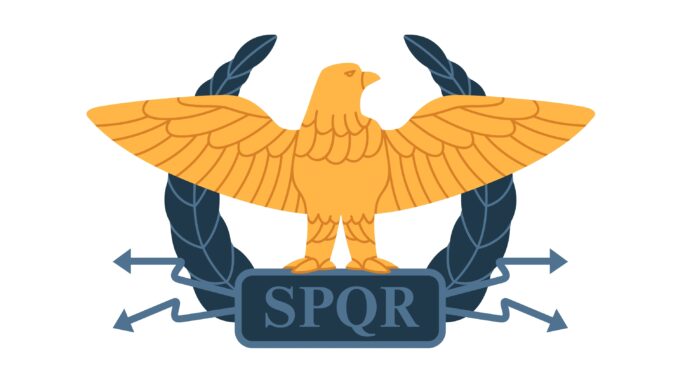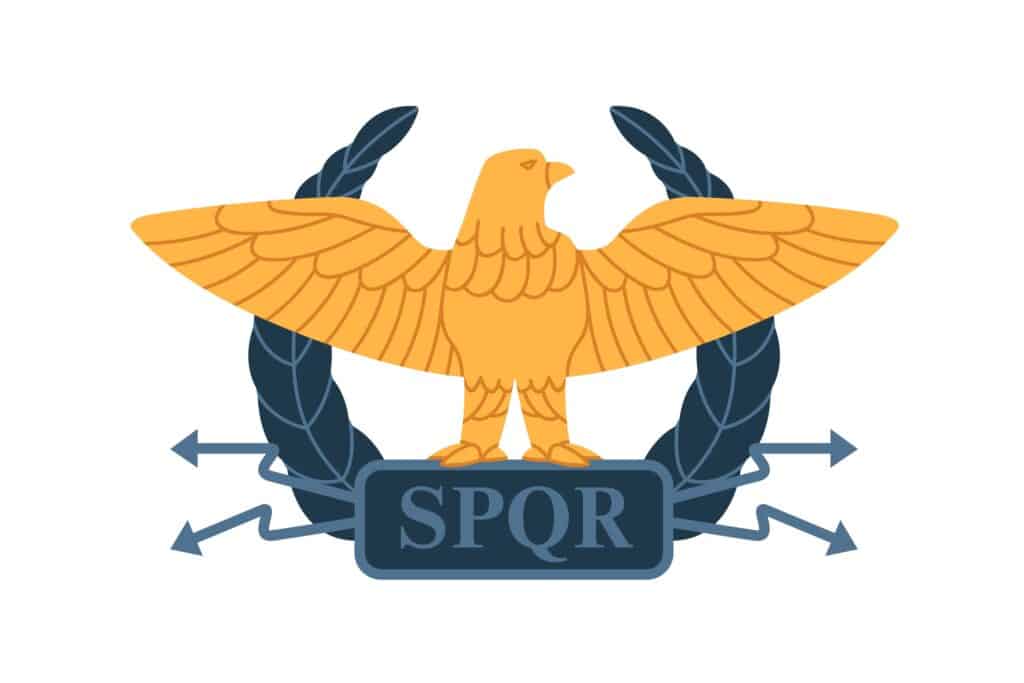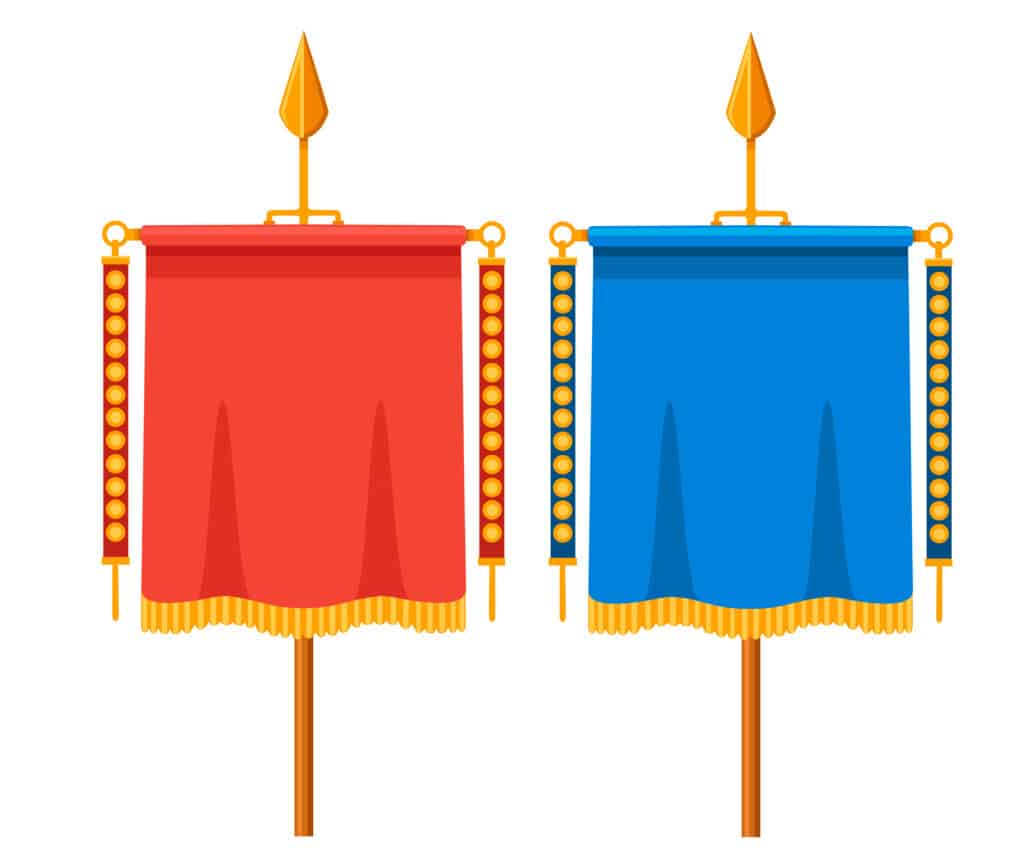
Introduction
The Roman Empire was probably one of the most significant and powerful empires in the history of the whole world – and we can see its influence in many countries even today. That might leave you wondering whether Rome had a flag, and what its flag looked like.
The Roman Empire did not have a flag the way that modern civilizations had flags. Although its soldiers often marched under banners and symbols of all kinds, there was no single flag that represented the Roman Empire. At the time, flags weren’t used to represent the nations of the world, so it’s not surprising there’s no Roman flag.
However, banners and symbols were important to the Roman Empire as it spread across the globe – so we’re going to look at how flags served the Roman Empire, and how they were used.
Did The Roman Empire Ever Have A Proper Flag?

The Roman Empire did not have a flag, no. There was no single symbol that represented the Roman Empire, although many different symbols were used, including eagles, wolves, serpents, and more. The eagle was probably the most prominent, and it’s the one that many people still associate with Rome today, but there was no national design that bore it.
Instead, the Roman armies had a standard, which many legions marched under as they spread around the world. The standard was usually a golden eagle – the aquila. The legionary carrying the eagle would be known as an aquilifer, meaning “eagle-bearer,” and was treated with great respect.
The standards were immensely important to the legions, to the extent that they were almost seen as religious symbols, and they would be fiercely defended by the troops.
Rome put great energy into protecting these symbols and would also fight to recover them if they were lost, but sadly, none still exist today. They were not the same as a flag, but they were an immensely important symbol of Rome nonetheless. Indeed, it is thought that many Romans viewed their standard as more important than today’s military personnel view their flag.
The aquila therefore was shown a great deal of respect, and would have served many of the same purposes as the flag. This may be partly why Rome didn’t develop a flag to represent its country – it didn’t need to. If you’re looking for a symbol for the Roman Empire, the aquila is probably the most expressive and recognizable.
Did The Romans Carry Banners?
There is no doubt that the Roman legionaries marched under banners and flew these as they spread around the globe. The banner also served important purposes, being a meeting point for soldiers, and helping to coordinate movements on the battlefield.
The banner could be used to communicate with the soldiers; the ensign carrying it would raise, lower, or wave the banner to indicate how the troops should behave.
There was also the draco, a military banner that the Roman cavalry sometimes used. This took the shape of a dragon emblem, and has been described as a long sleeve made up of multiple pieces of colored cloth. It may have been used to help archers assess wind strength and direction so that they could adjust their shots accordingly.
Furthermore, the troops often carried the vexillum, which was a fabric banner attached to a horizontal bar, and borne on a lance. Vexillum is a diminutive of the word “sails” and these usually represented the regiment’s colors, helping units to distinguish between each other.

One such item has survived to the modern era, and it’s thought to date back as far as the first half of the 3rd century CE. It’s made of linen and shows the goddess Victoria.
Others showed images such as wild boars, wolves, etc.
Not much is known about who carried this particular kind of banner, but it certainly had importance to the Roman troops – although it was not as important as other symbols, like the aquila.
In general, the carrying of flags and banners was a highly prestigious position, and tended to be regarded as a great honor. These positions were sought after and respected.
Often, the person bearing the flag (or standard) was so important that a backup would be assigned before battle to ensure that there was always somebody to carry and guard these important symbols.
Some of the Roman flags and banners bore the acronym SPQR, which you may be familiar with. This stands for “senatus populisque romani,” which translates to “the senate and the people of Rome.”
This acronym is seen in other places, too – it’s not exclusive to flags. It appears on memorials and monuments as well. In some ways, it can be seen as the equivalent of a country motto.
Did Other Contemporaries Of The Roman Empire Have National Flags?
Flags have been used throughout human history to send messages and categorize different groups, but it’s not likely that any of the Romans’ contemporaries had national flags either. The first national flag is commonly acknowledged to have belonged to Denmark – but only goes as far back as 1219 (and wasn’t formally adopted until 1625).
Since the Roman Empire collapsed in 476 AD, it’s therefore pretty unlikely that any other countries had national flags at this time. They probably used flags in the same way that the Romans did, but flags were not utilized as symbols of whole countries.
Although today, every country has a national flag and this might seem like a standard part of creating identity and culture, this certainly wasn’t the case during the Roman Empire. Despite that, symbols were still seriously important to the Romans, and as you can see above, they used many, especially in battles.
Conclusion
Although the Roman Empire did not have a national flag, there is no doubt that there were some significant symbols that were frequently carried during battles and conquests at this time. The aquila is the most important of the Roman symbols, but other flags, such as the draco and the vexillum, were treated with great respect too.
